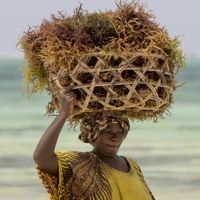

AquaInvest Platform
Authors
Tags
- AgTech (1)
- Seaweed farming (17)
- Gender (3)
- Research (1)
- Biodiversity (1)
- Guidelines (1)
- Seaweed (24)
- Fishery (8)
- Environment, Disaster Risk, and Climate Change (1)
- China (1)
- Region - East Asia and Pacific (2)
- Agriculture (17)
- Agriculture Data Platform (1)
- Korea (4)
- Ecosystem Services (3)
- Policy and Regulations (1)
- Climate Change Adaptation (4)
- Climate Resilience (5)
- Food Safety (3)
- Africa (2)
- Mariculture (21)
- Food Security (8)
- Policy - Food Security (1)
- Gender Equality (2)
- Blue Economy (31)
- Agribusiness (12)
- Climate Change (5)
- AFR Region (1)
- Environment (13)
- Policies and Legislation (2)
- Aquaculture (40)
- Indonesia (1)
- Nutrition & Diets (1)
- women (1)
Blog » Options for Reducing Plastic Leakage to the Marine Environment from Capture Fisheries and Aquaculture
Options for Reducing Plastic Leakage to the Marine Environment from Capture Fisheries and Aquaculture
The Government of Indonesia's (GoI) National Plan of Action on Marine Plastic Debris (NPOA-MPD 2017-2025) outlines the ambitious objective of reducing marine plastic debris by seventy percent by 2025. Abandoned, Lost and Discarded Fishing Gear (ALDFG) is a major component of sea-based sources of marine debris, and is another important sea-based source of plastic leakage. The cultivation of marine and aquatic species, including seaweed, uses plastic components such as buoys, ropes, harvest bins and feed sacks. The primary pathways for plastic leakage from aquaculture include mismanagement, deliberate discharge, extreme weather and catastrophic events such as tsunamis. The impacts of fishery and aquaculture plastic pollution on the environment, economy, livelihoods and food security are significant. The scale of these impacts on fisheries, marine ecosystems and human users has prompted international action. Managing and mitigating plastic pollution from fisheries and aquaculture has the potential to contribute to Indonesia's marine plastic debris targets while also providing economic opportunities. This report presents options for reducing ALDFG and ALDAG in Indonesia, and improving the management and use of End-of-life fishing gear (EOLFG).
Download link: https://elibrary.worldbank.org/doi/epdf/10.1596/39801